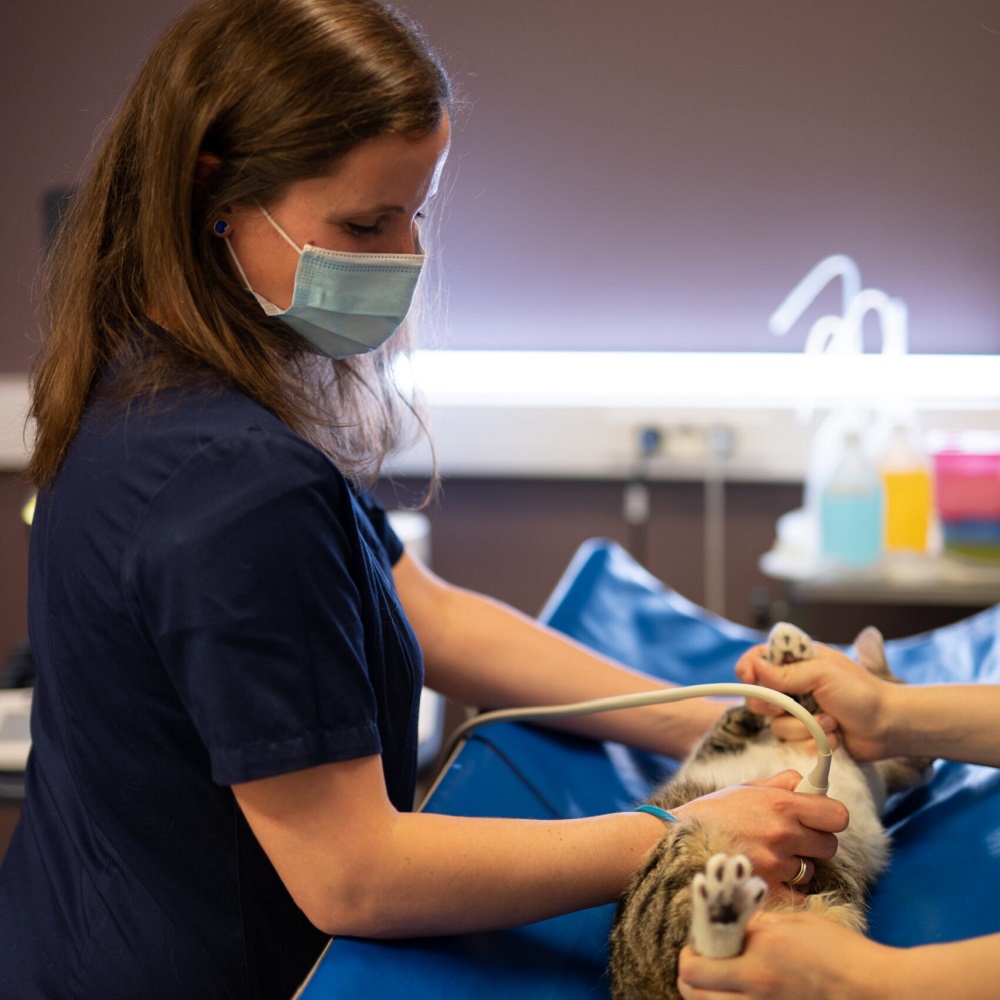Urinary obstruction in cats (FUS)

Diseases of the urethra and bladder are common in cats.
Feline Urologic Syndrome (F.U.S.) is the term used to describe all cats with difficulty in urinating, urethral obstruction or chronic cystitis.
Calculi are sometimes the cause, but not always. In fact, this syndrome may be due to mucous plugs or “sand” (crystal dust) in the urine, urinary tract infection, urethral spasm or strictures. The consequences can be very serious, even fatal.
Therefore, when a cat presents with urethral obstruction, whether or not due to urinary calculi, this is an emergency situation that requires prompt veterinary attention.
Animals between 2 and 5 years of age are more frequently affected by F.U.S.
Origins
Male cats are more often affected by urinary obstruction, due to the anatomy of their urethra.
A so-called “supermarket” or low-end diet is often too rich in magnesium and/or phosphorus, increasing or decreasing the PH of urine and thus favoring the appearance of bladder stones. Cats don’t drink much, so their urine is highly concentrated and sediments are less frequently eliminated.
Cats who lack activity seem to suffer from F.U.S. more often than those who exercise regularly (city-dwellers are more affected than country cats…).

Symptoms and warning signs
- Difficulty urinating: when an animal is in position but nothing (or very little) is emitted.
- Pain: the animal meows when trying to urinate
- Blood in the urine
- A bladder globe: the bladder is as big as a grapefruit in the abdomen, and very hard. In view of the pain, your cat may not prefer to have his abdomen touched, but this symptom is significant.
- Depression, anorexia, hypothermia, vomiting: all these symptoms are due to urea poisoning retained in the body.
- Coma, meaning extreme suffering of the body, is a sign that your cat needs to be taken to a vet as soon as possible.
Diagnosis

Treatment
Emergency treatment consists in “unblocking” the cat, i.e. removing the stone blocking the urethra. The veterinarian anesthetizes the cat, when its blood potassium concentration (cardiotoxic) allows it, and performs a urinary catheterization. The urinary catheter remains in place for 48 hours, emptying the bladder and flushing out any small stones present. Once the catheter has been removed, we observe whether the cat is urinating normally.
The cat is perfused to boost urine production and combat blood ion and water disorders, as well as the acute renal failure caused by the obstruction.
Medical treatment is also provided: a urinary acidifier in case of struvite stones, anti-inflammatories to combat inflammation of the urethra or bladder, antibiotics in case of bacterial superinfection (rare) and to avoid secondary infections due to the catheter, and antispasmodics to combat painful urethral spasms.
A special diet is required for two months to dissolve any struvite stones remaining in the bladder, and the diet is modified after urine and/or ultrasound monitoring. Thereafter, an adapted diet and increased water intake are strongly recommended to reduce the risk of recurrence.
If oxalate crystals are present, surgery (cystotomy) may be required to remove the stones from the bladder. This is because oxalate stones are not dissolvable with a change of diet.
In the event of recurrence, a urethrostomy is performed to remove the penis and thus the narrow part of the urethra responsible for blocking the urinary stones.
